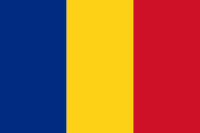Sumqayit
| Sumqayıt Sumqayıt |
|||
|---|---|---|---|
| — City & Municipality — | |||
 |
|||
|
|||
 Sumqayıt
|
|||
| Coordinates: | |||
| Country | |||
| City | Sumqayit | ||
| Area | |||
| - Total | 96 km2 (37.1 sq mi) | ||
| Population (2008) | |||
| - Total | 279,086 | ||
| Time zone | AZT (UTC+4) | ||
| - Summer (DST) | AZT (UTC+5) | ||
Sumgayit (Azerbaijani: Sumqayıt; Russian: Сумгаит; also, Sumgait and Sumqayyt) is a city in Azerbaijan, located near the Caspian Sea, about 30 kilometres away from the capital, Baku. The city has a population of 357,900, making it the third-largest city in Azerbaijan after the capital Baku and Ganja. The city has a territory of 83 km². It was founded on November 22, 1949. Two settlements are within the city administration: Corat and a settlement named after Haji Zeynalabdin Taghiyev. It is home to Sumqayit State University.
Contents |
History

The first reports of settlements at the present site of Sumgayit were in 1580, although nothing substantial was created on the site until the Soviet Union gained control over the area in the 1920s. In 1935, the Soviet government decided to develop heavy industry in Absheron Peninsula, and the future location of Sumgayit was chosen from its proximity to Baku and its key position on existing railroad lines.
Between 1938-1941, a thermal power station was constructed to power Baku's growing petroleum industry. This was soon followed by more heavy industries. After a pause due to World War II, more metallurgical and chemical plants were constructed. This rapid growth created a number of jobs, and a need for a resident population. By 1949, Sumgayit gained official city status.
However, as a result of the Soviet planning of that era, the city became heavily polluted. Soon after Azerbaijan's independence, the industrial sectors went into decline. The Apsheron Peninsula (which consists of Sumqayit, Baku and the Abşeron rayon) is considered by scientists to be the most ecologically devastated part of Azerbaijan. The city is known for its children's cemetery, known as the "Baby Cemetery" which contains the many graves of infants born with deformities and mental retardation that were further complicated by the lack of adequate medical care for the poor.[1] In 2007, Time magazine placed Sumqayit on their list of The World's Most Polluted Places.[2]
Sumgait Pogrom
On February 29, 1988, violence erupted against the ethnic Armenian population living in Sumqayit, setting off a series of killings involving Azeris and Armenians. Approximately 26 Armenians and 6 Azerbaijanis died, with over 2000 injuries in 3 days of ethnic rioting. As a result, the whole Armenian population was forced from Sumqayit. The Sumqayit riots marked the beginning of the long-term stand-off between Armenians and Azeris, culminating in the later Nagorno-Karabakh War and continuing into the present. The city has become home to a number of refugees from the latter war.
Demographics
- Population: 357 900 inhabitants
- Density of population, per km²: 3621
- Annual population upsurge (pers): 1944
- Average lifetime: 70 years
- Ethnicity: Azerbaijanis 94.7%, Russians 1.7%, Ukrainians 0.3%, Tatars 0.3%, Jews 0.1%, Baloch 1%, others 1.9%.
Economics
- Gross domestic product (million USD): 69, 898
- Gross domestic product per head (USD): 240,6
- Import (million USD): 53,1
- Export (million USD): 36,7
Environment
Sumgayit was named as most polluted place on earth by the US based environmental group the Blacksmith Institute in 2006 and 2007. The report noted the former Soviet industrial base was polluting the local environment with industrial chemicals like chlorine and heavy metals. The report also mentioned cancer rates in Sumgayit were as much as 51% higher than the national average and that genetic mutations and birth defects were commonplace.[3]
International relations
Twin towns — Sister cities
 Ludwigshafen, Germany[4]
Ludwigshafen, Germany[4] Bari, Italy
Bari, Italy Cherkassy, Ukraine
Cherkassy, Ukraine Cu Cou, China
Cu Cou, China Ceyhan, Turkey
Ceyhan, Turkey Rustavi, Georgia
Rustavi, Georgia Mogilev, Belarus
Mogilev, Belarus Linz, Austria
Linz, Austria Piteşti, Romania
Piteşti, Romania Aktau, Kazakhstan
Aktau, Kazakhstan Genoa, Italy
Genoa, Italy
Notable people from Sumgayit
- Rafael Aghayev, karateka
- Shakhriyar Mamedyarov, chess player
See also
- FK Genclerbirliyi Sumgayit
References
- ↑ Sumgayit: Soviet’s Pride, Azerbaijan's Hell by Arif Islamzade at Azer.com, Autumn 1994
- ↑ Sumgayit, Azerbaijan - The World's Most Polluted Places TIME, September 12, 2007
- ↑ World's Worst Polluted Places — by the Blacksmith Institute (accessed 2007-12-3)
- ↑ Interview with Michael Schmunk, Chargés d'Affaires of Germany in Azerbaijan, Azerbaijan International, Spring 1995 (3.2)
- Sumqayit at GEOnet Names Server
External links
- Sumqayıt Şəhər İcra Hakimiyyətinin rəsmi İnternet saytı
- Sumqayıt Təhsil Şöbəsi
- Sumqayıt Xəbər
- Sumgait foto video galereya
- Sumqayit forum
- Sumqayit Companies
- Browse hotels in Sumqayit
|
|||||||||||
|
|||||||||||

